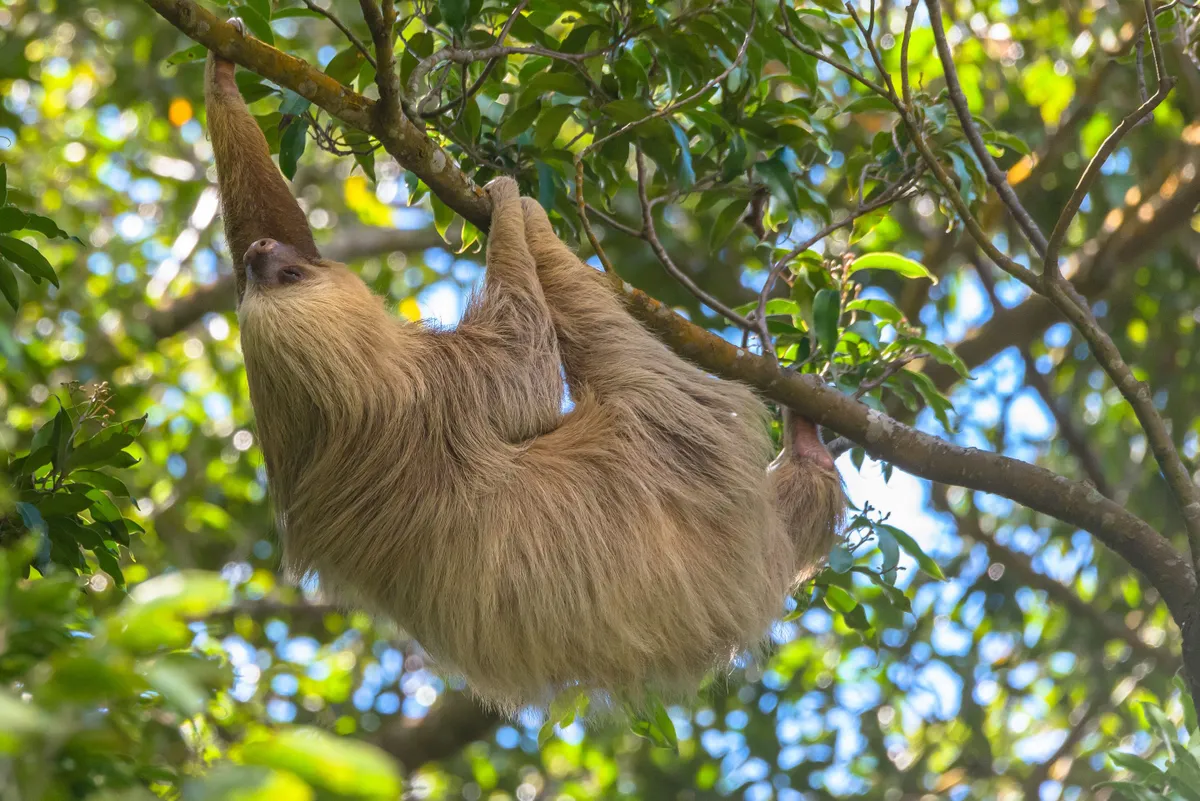What do we know about pygmy three-toed sloths?
My favourite fact about pygmy sloths is that they may well be the world’s only stoned sloths. When the biologist Bryson Voirin studied their sleep patterns he noticed they resembled those of animals that had been given sedatives.
He hypothesised that this could be down to their diet. Some mangrove leaves are known to contain alkaloids with narcotic properties. So pygmys may be the only sloths that don’t just look stoned but are stoned!

Why is the pygmy three-toed sloth listed as Critically Endangered on the IUCN Red List?
It is only found on one tiny island called Escudo off the Caribbean coast of Panama. Their population is unknown but thought to be very small, and their main threat is from tourism and development.
Panama is changing at an alarming rate – the sound of chainsaws fills the air – because the sloths’ home has lovely white beaches that are coveted by developers.
Why did you start the Sloth Appreciation Society?
I felt that sloths were unfairly maligned. People would ask me, “How can sloths exist when they are such losers?” Sloths are not ‘lazy’; they are extremely successful animals that have haunted the planet in one shape or another for the past 60 million years. The secret to their success is their slothful nature. They are energy-saving icons.
How do sloths save energy?
Sloths can exist on as little as 100 calories a day, thanks to some ingenious adaptations. Turning their lives upside down requires fewer muscles than supporting an upright existence, which burns less energy.
Unlike other warm-blooded creatures, they don’t use their internal combustion engine to keep a constant body temperature. Energy from the sun is free, so they bask like lizards and have an unusually thick coat for the tropics.
Sloths are also creative recyclers – they are the only mammal we know of that doesn’t fart: waste gas accumulates in their stomach and helps keep them afloat in water.
Learn why sloths are so slow.
How do sloths evade predators?
They are masters of disguise, hiding from danger instead of trying to escape it. Their fur has grooves that trap moisture and act as tiny hydroponic gardens for a range of algae. This gives them a greenish hue and helps them merge with the trees. Pygmys spend a lot of time in the mangroves and are great swimmers.

What’s the difference between Bradypus and Choloepus sloths?
Bradypus sloths are also known as three- toed sloths, whereas Choloepus are known as two-toed. However, both species have three toes – it is their finger digits that differ in number.
Choloepus sloths have long blonde- brown hair and look like a cross between a Wookiee and a pig, whereas the smaller Bradypus has grey-brown fur, banded face markings, wears an enigmatic Mona Lisa smile and often a bowl haircut. Bradypus are fussier eaters, preferring leaves of the Cecropia tree. Choloepus are hardier, a bit faster and have a more varied diet.

The expert view
EDGE's programme is helping to conserve the pygmy sloth through a long-term monitoring scheme. We're also involved in education with local indigenous communities.
By collaborating with schools, government bodies, local NGOs and research centres in Panama, we are devising a plan to ensure land use regulation is implented in order to better protect the species.
Davi Teles is Latin American projects manager at EDGE of Existence, ZSL (Zoological Society of London).
Lucy Cooke is founder of the Sloth Appreciation Society. Her book The Unexpected Truth about Animals is out now (Black Swan, £8.99)

